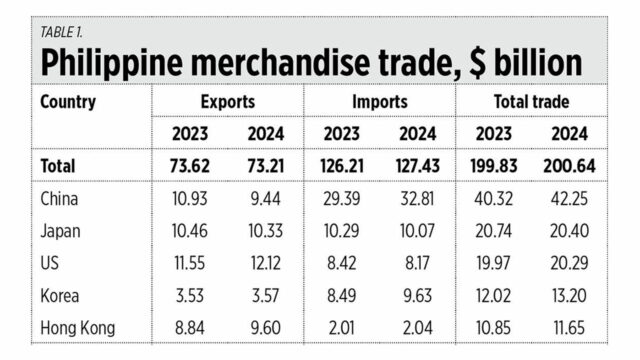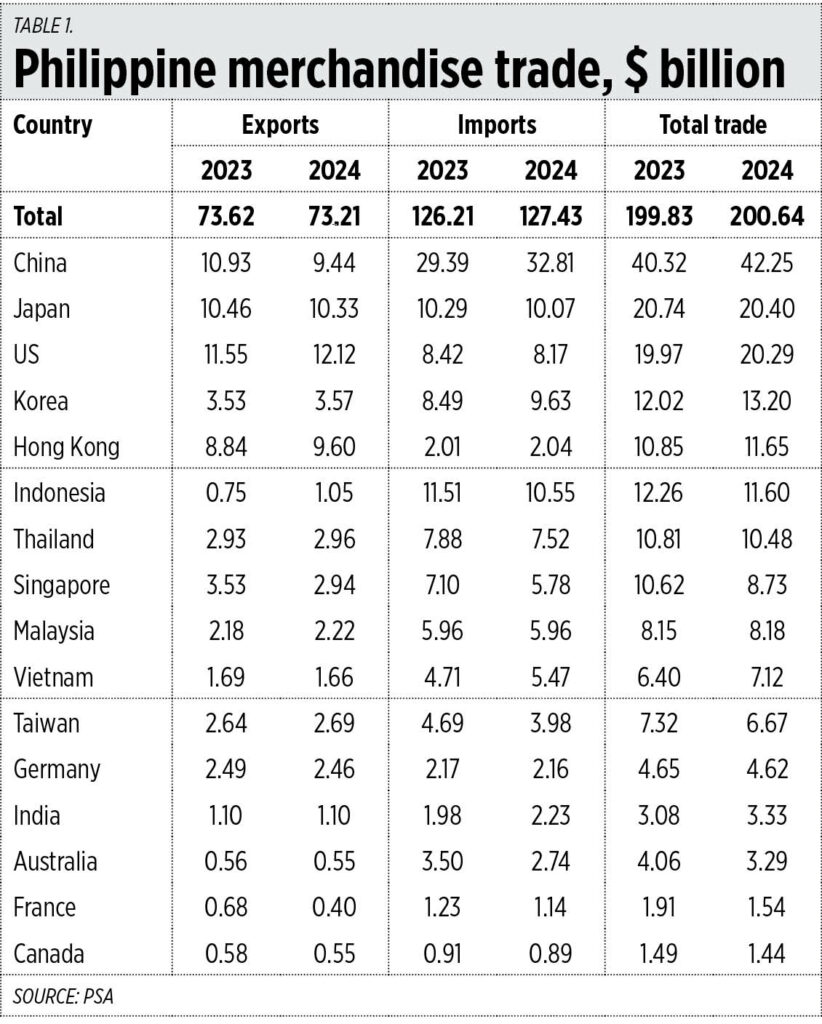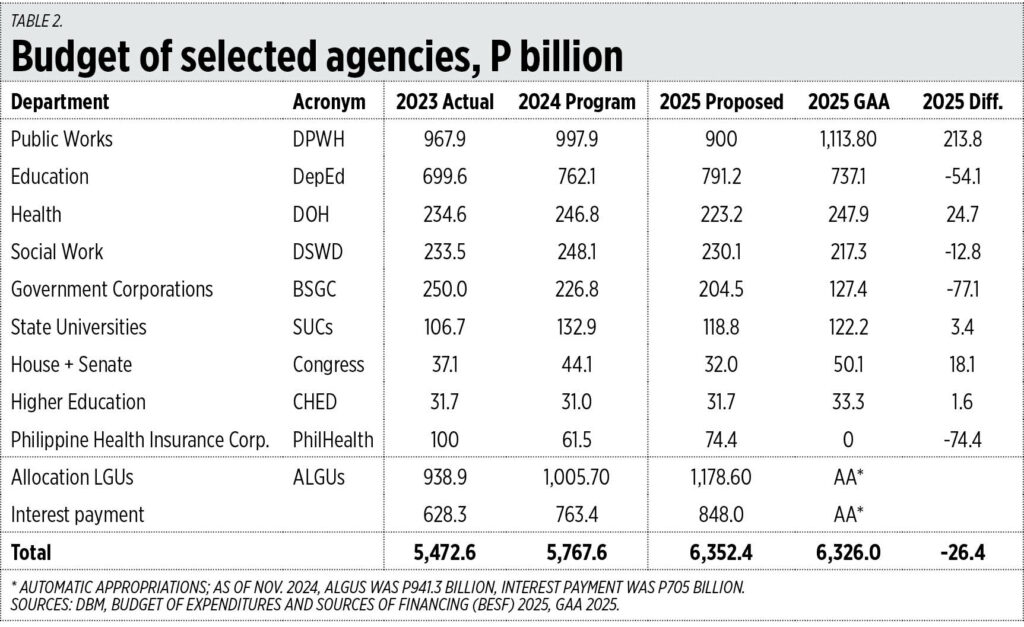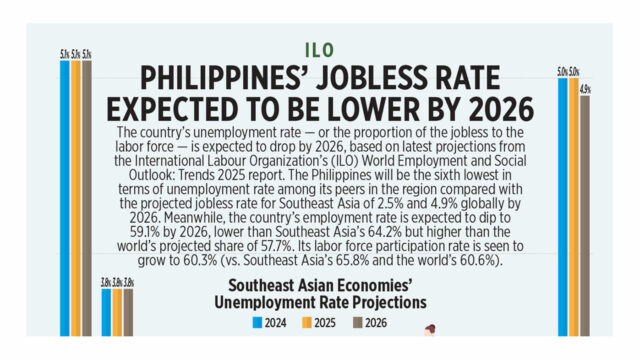Trade non-growth and budget expansion
Last Friday the Philippine Statistics Authority (PSA) released the December — and hence, full year 2024 — merchandise (or goods) trade data. It showed that exports were flat at $73 billion for both 2023 and 2024, as imports marginally increased by $1 billion.
But what significantly changed was the further rise in China’s share of our imports, from 23.3% in 2023 to 25.7% in the 2024 total imports. The total trade (exports plus imports) with China in 2024 at $42 billion is larger than those of Japan plus the US combined at $41 billion, and is slightly lower than trade with our five ASEAN neighbors with a combined total trade of $46 billion (see Table 1).
This has a big implication on our foreign policy. If so much of our imports — our clothes, shoes, buses, trucks, gadgets, other consumer and capital goods — comes from China, why is there so much noise against China? It does not make sense. We should focus on trade and commerce, tourism and investment, and economics over war mongering with countries around the world, especially our Asian neighbors.
It is a good thing that Donald Trump is back in the White House. Trump has a record of having started no new US wars from 2017-2020. It is likely that this will be repeated in 2025-2028. Now war mongering versus China, the Ukraine war, and the Middle East war has significantly simmered down. I think the deep state operatives that promote the US’ endless wars abroad are scared that Trump will fire them soon, or that their agencies will suffer budget cuts.
OPPOSITION TO GAA
The General Appropriations Act (GAA) 2025 is now being implemented but the political opposition against it continues, mainly over the defunding of Philippine Health Insurance Corp. (PHIC or PhilHealth) whose subsidy this year is zero.
I will compare the proposed versus the approved budget for 2025. While there is a small decline in the overall budget, there are huge increases in the budgets of the departments of Public Works and Highways (DPWH) and Health (DoH), and Congress. And there are big declines in the budgets of the departments of Education (DepEd) and Social Welfare and Development (DSWD), in Budgetary Support for Government Corporations (BSGC), and, of course, zero for PhilHealth (see Table 2).
I believe that the fact that PhilHealth and the DoH are getting funding from smokers, vapers, and drinkers is problematic. The health establishment says that tobacco and alcohol are bad and hence, people should avoid these. Then, ironically, the same health establishment is happy when billions of pesos are collected from taxing more smokers and drinkers of legal products. The political opposition to GAA 2025, health advocates, and activists, are angry that PhilHealth gets zero this year from the taxes paid by smokers and drinkers.
To remove the irony of health being funded by unhealthy products, the earmarking of the proceeds from the tobacco tax to health agencies should be removed. The DoH and PhilHealth should get nothing from tobacco tax revenues, which should instead go to the general fund. That way, when revenues further decline due to there being fewer smokers and drinkers because of the high taxes — or due to greater illicit trade and smuggling — they will not be sad because they do not rely on it anyway.
With more public-private partnerships (PPP) in roads, airports, seaports and other infrastructure, there is little justification for the DPWH to have so large a budget. The priority should have been reducing the public debt stock, reducing interest rates or the cost of borrowing, and reducing public interest payments, from the projected P848 billion this year to below P500 billion or less. Interest payments from January-November 2024 were P705 billion, or equivalent to P2.1 billion/day. To be clear, that was interest payment alone.
And since there is no more virus crisis nor economic crisis, the budgets of the DSWD, state universities, and the Commission on Higher Education should further decline. The focus should be on fiscal responsibility, the aim should be for a balanced budget if not a budget surplus in years where there is no crisis in order to compensate for high budget deficits during years of economic crisis years.
Bienvenido S. Oplas, Jr. is the president of Bienvenido S. Oplas, Jr. Research Consultancy Services, and Minimal Government Thinkers. He is an international fellow of the Tholos Foundation.





![BSP_3822-1024x683 [BW file photo]](https://www.bworldonline.com/wp-content/uploads/2024/04/BSP_3822-1024x683-BW-file-photo-640x427.jpeg)











